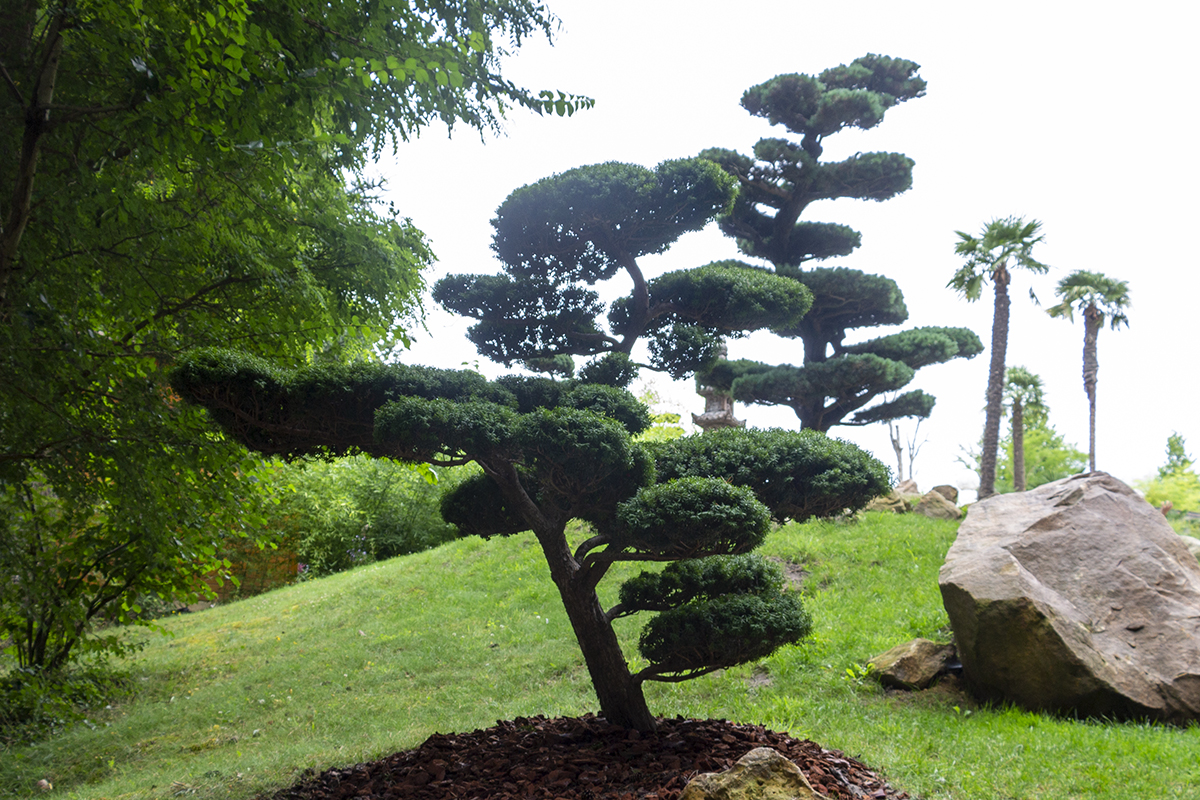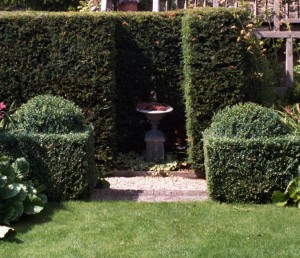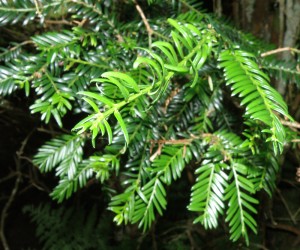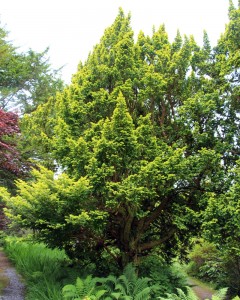The Yew tree is an easily recognisable plant of gardens and the countryside, being one of the few native British plants to be widely grown as an ornamental plant. It is a very adaptable plant growing in most situations with the exception of water logged ground and it responds very well to cutting. This, with its dense evergreen foliage has made a very popular material for hedging and topiary. It is also said it is slow growth is an advantage as it reduces the amount of cutting needed but it is not nearly as slow as is sometimes made out. Young plants can make 20 to 30 cm of growth a year; only slowing with age, as we all do!
Many selections have been made of Yew including fastigiated and variegated ones but it is still at its most impressive as a green hedge where it does an excellent job of defining spaces and providing a foil to the more colourful occupants of the garden. If planting it as a hedge make sure to prepare the site well, necessary with any hedge, and make sure the soil drains freely; even if this means installing drainage. Its dense evergreen foliage forms a very long lived hedge even in the shade and it has been said a yew hedge has a longer working life than a brick wall. The other advantage over a brick wall is its adaptability; creating a new opening in a wall is difficult and will always show up while with a yew hedge a saw and hedge clippers is all that is needed. Once the new opening is made the plants will soon break away as it happily forms new shoots from the old wood and so heal the wound made.
It is remarkably good at growing away from old wood, I’ve seen yew trees cut down to ground level and shoot away from the stump. Hawthorn is the only other plant I know with such a strong regenerative ability. This is a very un-conifer like characteristic, but yews are not very conifer like though there appears know doubt that it should be classed as one.
Though now the yews are seen mainly as garden plants; it has been an important plant to humans for a long time. The Yew combines great long levity with a valuable wood which was prized was making bows, the most valuable weapon for most of human history. The ancient Greeks called the yew τόξο (or toxo) and the Romans called the yew taxus. As with any plant with such an important and long history with humanity a lot of superstitions have grown up around it, and this can be seen in its importance to druids and its presence in church yards. The Fortingall Yew at over 2000 years old is believed to be the oldest tree in Britian and grows in the churchyard of the village Fortingall in Perthshire.
In 1753 Linnaeus named the Yew Taxus baccata L. in the second volume of “Species plantarum” the Taxus from the Latin for yew and the baccata from the Latin for berry after the distinctive red fleshy arils which enclose the black seed and look like berries. It is only this red fleshy fruit-like part of the yew which is not poisonous as all other parts of the plants can kill humans if sufficient is eaten. Yew exists as separate male and female plants and so these colourful arils are only found on the female plants. The species Taxus baccata can be found as both male and female plants its cultivars will be only one sex and this should be considered when choosing one.







